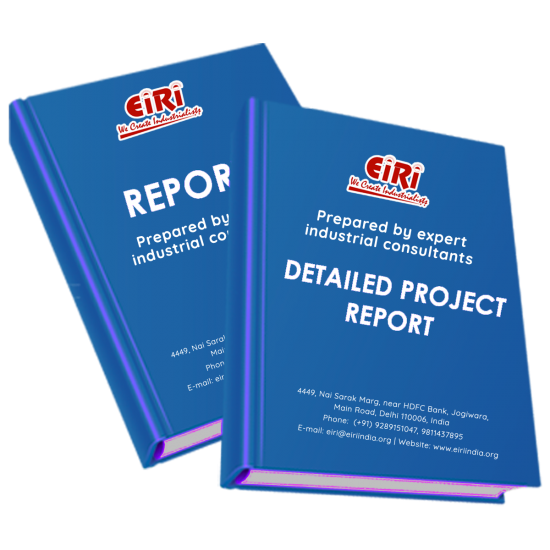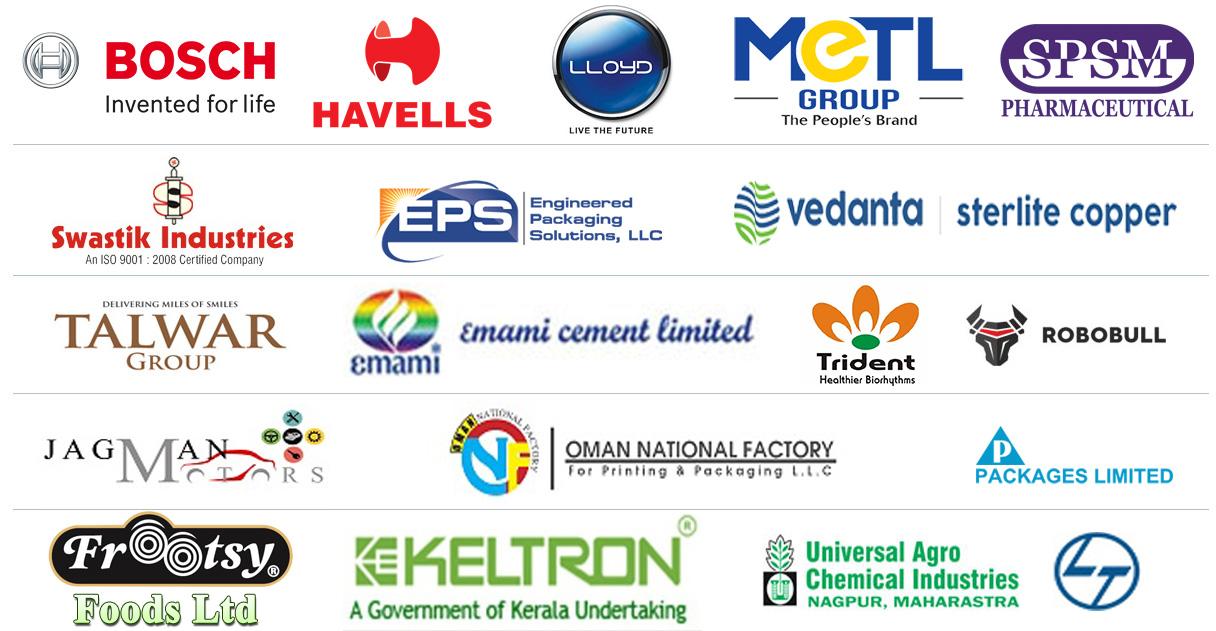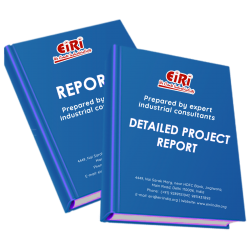Detailed Project Report on Margarine Butter from Vegetable Oil

- More than 40 years of experience
- Managed by expert industrial consultants
- ISO 9001-2015 Certified
- Registered under MSME, UAM No: DL01E0012000
- 24/5 Research Support
Get your quesries resolved from an industry expert. Ask your queries before report or book purchase. - Custom Research Service
Speak to the our consultant to design an exclusive study to serve your research needs. - Quality Assurance
All reports are prepared by highly qualified consultants & verified by a panel of experts. - Information Security
Your personal & confidential information is safe & secure.
MARGARINE BUTTER FROM VEGETABLE OIL
[EIRI/EDPR/0835] J.C.: 9453
INTRODUCTION
Margarine is a complex system essentially containing on the one hand a mixture of triglycerides which are either crystallized or non-crystallized at ambient temperature, and aqueous ingredients on the other hand. Minor ingredients, e.g. emulsifiers, flavours, colouring matter, vitamins etc. are dissolved or dispersed in either the fatty or the aqueous phase. Depending on the content of crystallized triglycerides in the fatty phase, the margarine is either pourable or more or less shape-retaining at ambient temperature. Since in conventional margarines the aqueous ingredients are dispersed in the form of small droplets in the fatty ingredients, margarines are generally water-in-oil type emulsions.
Upon melting, which takes place in the initial stage of the frying process, the margarine separates essentially into two layers, i.e. an oily and an aqueous layer. When the temperature is further increased, e.g above the boiling point of water, spattering may occur, since the water tends to escape from the bottom of the frying pan and entrainment of oily ingredients will thereby take place.
The present method provides margarines comprising proteins in the aqueous phase, the weight ratio of proteose-peptone proteins to proteinaceous material of an isoelectric point within the range of pH 4-6 being at least 0.5.
In this Specification the term "proteinaceous material of an isoelectric point within the range of pH 4-6" includes non-proteose-peptone proteins of such an isoelectric point and organic nitrogen containing non-proteinaceous material, e.g. urea, peptides, etc. Consequently the percentage of "proteinaceous material of an isoelectric point within the range of pH 4-6" is N×6.38 minus percentage proteose-peptone, in which N is the percentage nitrogen determined by the Kjeldahl method.
Proteose-peptone is defined as that proportion of the milk protein system not precipitated by heating at 95° C. to 100° C. for 20 minutes and subsequent acidification to pH 4.7, but precipitated by 12% (weight/volume [W:V]) trichloroacetic acid. The proteose-peptone proteins have been found to account for about 8-25% of the whey- and/or serum proteins and about 2-6% of the total proteins in milk.
Conventional ingredients, e.g. phosphatides, phosphatide fractions and partial glycerides are preferably present as well.
Particularly phosphatides are of importance, since they effect a synergistic action on the proteose-peptone proteins in respect of anti-spattering action.
Suitably 0.05-1.0%, especially 0.1-0.6% phosphates are present.
Both animal and vegetable phosphatides can be used, e.g. the phosphatides derived from egg-yolk, soyabeans, rapeseed, maize etc.
Soyabean phosphatides are particularly preferred and both whole soyabean phosphatides (which may include up to about 30% of soyabean oil) and their fractionated or hydrolysed derivatives (e.g. those containing 15-35% of monoacylglycero phosphatides) can be used.
Preferably the previously mentioned weight ratio of proteose-peptone to non-proteose-peptone proteins in the margarines of the present method is from 0.8 to 1.2. Particularly dairy proteins and especially proteins derived from cow's milk, more particularly proteins derived from cheese whey are used in the margarines of the present method.
Suitably the margarines of the present method are of a proteose-peptone content of at least 0.005%, particularly at least 0.03% by weight of the margarine product.
A suitable upper limit for the proteose-peptone content is 1.5% by weight of the margarine, preferably at most 1.0%.
COST ESTIMATION
Plant Capacity 500 Ton/Year
Land & Building (6000 sq.mt.) Rs. 53.40 Lac
Plant & Machinery Rs. 75.00 Lac
Working Capital for 2 Months Rs. 1.96 Cr
Total Capital Investment Rs. 3.34 Cr
Rate of Return 32%
Break Even Point 46%
CONTENTS
MARGARINE
EXAMPLES I-V
MARGARINES WERE PREPARED AS FOLLOWS:
THE PROTEINACEOUS MATERIALS THAT WERE INCORPORATED IN THE AQUEOUS PHASE WERE:
THE FRYING TESTS WERE PERFORMED AS FOLLOWS:
THE EQUIPMENT USED FOR THE SPATTERING TEST CONSISTED OF:
PRIOR TO STARTING THE FRYING TESTS, THE APPARATUS WAS HEATED UP AS FOLLOWS:
THE MEASURED DEGREE OF SPATTERING AND THE VISUAL ASSESSMENT CORRELATE AS FOLLOWS:
EXAMPLES VI-XIII
EXAMPLE XIV
EXAMPLES XV-XVII
METHODS FOR AN ACCELERATED PROCESS OF MARGARINE
THE PRIOR INFORMATIONS
REPRESENTATIVE PRIOR-ART TEACHINGS ARE SET FORTH BELOW.
METHODS
THE ENTIRE PROCESS COMPRISES THREE IMPORTANT STAGES.
THE CATALYST
THE SAFFLOWER OIL USED IN THE EXAMPLES IS IDENTIFIED AS FOLLOWS:
EXAMPLE 1
EXAMPLE 2
EXAMPLE 3
EXAMPLE 4
EXAMPLE 5
EXAMPLE 6
EXAMPLE 7
EXAMPLE 8
EXAMPLE 9
EXAMPLE 10
EXAMPLE 11
EXAMPLE 12
EXAMPLE 13
EXAMPLE 14
EXAMPLE 15
EXAMPLE 16
EXAMPLE 17
EXAMPLE 18
EXAMPLE 19
EXAMPLE 20
EXAMPLE 21
MARGARINE FAT
EXAMPLE I
EXAMPLE III
EXAMPLE V
EXAMPLE VI
MARGARINES WERE PREPARED FROM THE FAT COMPOSITIONS OF EXAMPLES I-V AS FOLLOWS:
PROCESSING MARGARINE OR BUTTER FOR SQUEEZE PACKET CONTAINERS
METHODS
THE DRAWINGS
DESCRIPTIONS
MARGARINE PRODUCT
METHODS
THE DRAWINGS
DEFINITIONS
DESCRIPTIONS
(A) COMPOSITION OF EMULSIFIED SPREADS AND MARGARINES
1. OIL PHASE
A. STRUCTURAL FAT
B. SOFT OIL
C. OTHER OIL PHASE INGREDIENTS
2. AQUEOUS PHASE INGREDIENTS
(B) METHOD FOR MAKING EMULSIFIED SPREADS AND MARGARINES
(C) POST HARDENING
METHODS FOR MEASURING PROPERTIES OF OILS USED IN EMULSIFIED SPREADS AND MARGARINE PRODUCTS
(A) DIFFERENTIAL SCANNING CALORIMETRY
(B) SPREADABILITY
EXAMPLE I
EXAMPLE II
EXAMPLE II WAS MADE WITH THE FOLLOWING INGREDIENTS:
EXAMPLE III
IMPROVED MARGARINE COMPOSITIONS/CONTAINING SOLID SUCROSE POLYESTERS
DESCRIPTIONS
SOLID SUCROSE POLYESTER
EDIBLE OIL
EMULSIFIER
OTHER COMPONENTS
MANUFACTURE
EXAMPLE I
PREPARATION OF TETRABEHENYL TETRACAPRYLYL SUCROSE
PROCEDURE
EXAMPLE II
PREPARATION OF TETRABEHENYL TETRACAPRYLYL SUCROSE
PROCEDURE
STEP A--PREPARATION OF POTASSIUM BEHENATE
STEP B--PREPARATION OF SUCROSE OCTACAPRYLATE
STEP C--PREPARATION OF C 8 -C 22 SUCROSE POLYESTERS
EXAMPLE III
EXAMPLE IV
C. PROCEDURE
EXAMPLE V
BOTTOM OF FORM
LOW-FAT BUTTER OR MARGARINE SPREAD
DESCRIPTIONS
EXAMPLE 1
EXAMPLE 2
EXAMPLE 3
EXAMPLE 4
EXAMPLE 5
EXAMPLE 6
MARGARINE AND THE LIKE SPREAD WITH NATURAL BUTTER FLAVOUR
METHODS
DESCRIPTIONS
EXAMPLE 1
EXAMPLE 2
EXAMPLE 3
EXAMPLE 4
EXAMPLE 5
EXAMPLE 6
EXAMPLE 7
EXAMPLE 8
EXAMPLE 9
EXAMPLE 10
PROCESS FOR PRODUCING A BUTTER/MARGARINE BLEND PRODUCT
METHODS
THE DRAWINGS
MARGARINE INGREDIENTS
MARGARINE INGREDIENTS
MARGARINE NUTRITION FACTS
METHOD OF FORMING A BUTTER/MARGARINE BLEND
THE DRAWING
DESCRIPTIONS
PROPERTY ANALYSIS AND CHARACTERIZATION PROCEDURE
MOISTURE DETERMINATION
FAT ANALYSIS
SALT ANALYSIS
SOLIDS NON-FAT DETERMINATION
GENERAL COMMENTS ABOUT THE FAT, MOISTURE, SALT, AND SOLIDS NON-FAT DETERMINATIONS
PHOSPHOLIPIDS DETERMINATION
EXAMPLES
EXAMPLE 1
EXAMPLE 2
EXAMPLE 3
COMPARATIVE EXAMPLE NO. 1
INSTALLATION FOR CONTINUOUS PRODUCTION OF EDIBLE FATS, MOSTLY BUTTER AND MARGARINE
MARGARINE
MARGARINE MANUFACTURE
PREPARATION
HYDROGENATION
COMBINING THE INGREDIENTS
AGITATION
QUALITY CONTROL
MARGARINE PRODUCTION PROCESS
PRODUCTION OF MARGARINE AND LOW FAT SPREADS
THE PROCESS
THE PROBLEM
THE SOLUTION
THE ADVANTAGES
APPENDIX – A:
01. PLANT ECONOMICS
02. LAND & BUILDING
03. PLANT AND MACHINERY
04. OTHER FIXED ASSESTS
05. FIXED CAPITAL
06. RAW MATERIAL
07. SALARY AND WAGES
08. UTILITIES AND OVERHEADS
09. TOTAL WORKING CAPITAL
10. TOTAL CAPITAL INVESTMENT
11. COST OF PRODUCTION
12. TURN OVER/ANNUM
13. BREAK EVEN POINT
14. RESOURCES FOR FINANCE
15. INSTALMENT PAYABLE IN 5 YEARS
16. DEPRECIATION CHART FOR 5 YEARS
17. PROFIT ANALYSIS FOR 5 YEARS
18. PROJECTED BALANCE SHEET FOR (5 YEARS)
How to Make Project Report?
Detailed Project Report (DPR) includes Present Market Position and Expected Future Demand, Technology, Manufacturing Process, Investment Opportunity, Plant Economics and Project Financials. comprehensive analysis from industry covering detailed reporting and evaluates the position of the industry by providing insights to the SWOT analysis of the industry.
Each report include Plant Capacity, requirement of Land & Building, Plant & Machinery, Flow Sheet Diagram, Raw Materials detail with suppliers list, Total Capital Investment along with detailed calculation on Rate of Return, Break-Even Analysis and Profitability Analysis. The report also provides a birds eye view of the global industry with details on projected market size and then progresses to evaluate the industry in detail.
We can prepare detailed project report on any industry as per your requirement.
We can also modify the project capacity and project cost as per your requirement. If you are planning to start a business, contact us today.
Detailed Project Report (DPR) gives you access to decisive data such as:
- Market growth drivers
- Factors limiting market growth
- Current market trends
- Market structure
- Key highlights
Overview of key market forces propelling and restraining market growth:
- Up-to-date analyses of market trends and technological improvements
- Pin-point analyses of market competition dynamics to offer you a competitive edge major competitors
- An array of graphics, BEP analysis of major industry segments
- Detailed analyses of industry trends
- A well-defined technological growth with an impact-analysis
- A clear understanding of the competitive landscape and key product segments
Need Customized Project Report?
- Ask for FREE project related details with our consultant/industry expert.
- Share your specific research requirements for customized project report.
- Request for due diligence and consumer centric studies.
- Still haven't found what you're looking for? Speak to our Custom Research Team
About Engineers India Research Institute:
Note: We can also prepare project report on any subject based on your requirement and country. If you need, we can modify the project capacity and project cost based on your requirement.
Our Clients

Our Approach
- Our research reports comprehensively cover Indian markets (can be modified as per your country), present investigation, standpoint and gauge for a time of five years*.
- The market conjectures are produced on the premise of optional research and are cross-accepted through associations with the business players
- We use dependable wellsprings of data and databases. What's more, data from such sources is handled by us and incorporated into the report
Why buy EIRI reports?
- Our project reports include detailed analysis that help to get industry Present Market Position and Expected Future Demand.
- Offer real analysis driving variables for the business and most recent business sector patterns in the business
- This report comprehends the present status of the business by clarifying a complete SWOT examination and investigation of the interest supply circumstance
- Report gives investigation and top to bottom money related correlation of real players/competitors
- The report gives gauges of key parameters which foresees the business execution





















